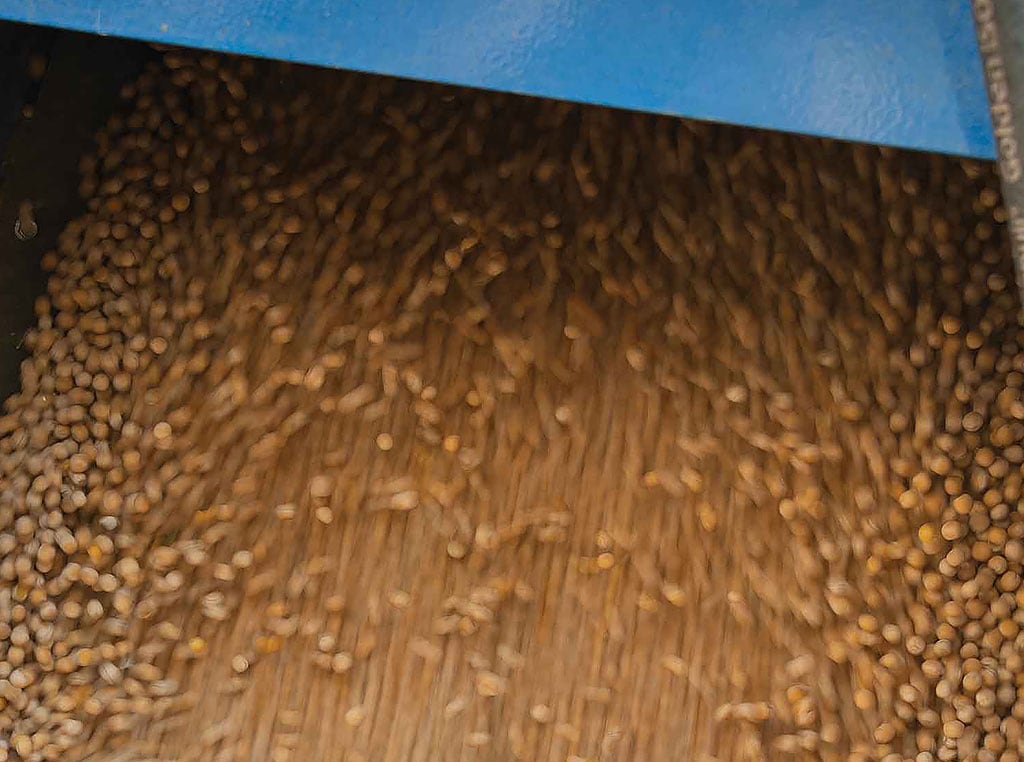
Every ingredient in this classic spaghetti and meatball dish could be something different than what was supposedly purchased.
Agriculture, Education June 01, 2021
Food Fraud!
Adulterated food costs the industry billions.
What’s wrong with this picture of spaghetti and meatballs in tomato sauce with a dash of parmesan cheese? Maybe nothing, but if any of its ingredients aren’t what you paid for, you’re a victim of food fraud!
“The label said beef but is it pork or horse?” asks John Spink, Director of Michigan State University’s Food Fraud Initiative in East Lansing, Michigan. “Is the pasta sauce made from the right grade tomato paste?”
Food fraud occurs whenever food products, ingredients and packaging is intentionally adulterated to increase profits. It’s an umbrella term that includes altering, substituting or tampering with ingredients, counterfeiting or mislabeling and product theft. It’s a problem for consumers, supermarkets, food services and farmers. It’s one of the drivers behind the push for more transparency and traceability from seed to plate.
“Everyone has been a victim of food fraud, even you and me,” says Sylvain Charlebois, Director of the Agri-Food Analytics Lab at Dalhousie University in Halifax, Nova Scotia. “We’ve probably all bought something that was deliberately mislabeled. It could be as much as a USD$50 to USD$60 billion problem worldwide. But the bigger worry is that unlabeled ingredients in food products endanger the lives of those with severe food allergies.”
Food fraud burst into public consciousness in 2008 when melamine was discovered in Chinese-made pet food and infant formula. The nitrogen-based compound, used to make plastic cutlery, dupes testing equipment to show a food product contains higher levels of protein than it actually has. It sickened tens of thousands of children globally and killed thousands of pet dogs and cats. This disaster spurred the international community to include food fraud as a major component of the Global Food Safety Initiative (GFSI) launched in 2014.
Shocks keep coming. In 2019, a PricewaterhouseCoopers’ audit found that 50% of all Australian beef sold in China wasn’t Australian, and a substantial portion wasn’t beef at all. The same year a Chinese inspector discovered a shipment of Canadian pork contained a feed additive, ractopamine, that’s restricted in Canada. China briefly suspended imports of all Canadian pork. An investigation showed cause for concern.
“It discovered someone had altered documents to make it look as if the product was Canadian,” says Gary Stordy with Canada Pork in Ottawa. “Fortunately, Canada has a traceability system in place so we could prove it didn’t come from a Canadian facility. Subsequently, the Canadian government enhanced security and oversight to reduce the chances of this happening again.”
“Food fraud cases increased 30% in Europe since the start of the pandemic due to the immense pressures it put on the food system,” Charlebois says. “The Food Standards Agency in the UK warned Brits in January not to just go on Facebook and buy meat from just anyone.”
The most commonly adulterated foods are olive oil, honey, Parmesan cheese, milk, saffron, seafood, fruit juices, spices, tea, coffee, hard cheeses, balsamic vinegar, wine, maple syrup and vanilla extract.

Above, two left photos. Olive oil is the most commonly adulterated food. Fraudsters commonly dilute it with a cheaper oil to increase their profits. Above right. John Spink says it’s critical to take a look at your entire system and identify weak points and vulnerabilities, and then eliminate them, to prevent fraud.
Random testing and analysis by the Canadian Food Inspection Agency (CFIA) found that 22% of honey being imported into Canada in 2018 had been adulterated with other sugars. Preventing fraud isn’t easy. Most counterfeiters and offending organizations come from within the food network, Spink says. They know a lot about how products are received, shipped and tested.
It can start creeping into the food system before a crop is planted. Caveat Emptor (buyer beware) to farmers buying inputs from unusual sources. Those bags of premium seed you bought in a sketchy deal off the internet might not contain what you paid for. The same goes for fertilizers and pesticides you’ve purchased outside normal channels. Scams like these are common in some countries.
“I won’t say this happens a lot (in Canada and the U.S.), but it’s not infrequent either, especially in the organic sector where certified organic seed, fertilizer, pesticides cost more,” Spink says. “Criminals will try to cut corners and take generic products, change labels or refill used drums with something else.”
Often food fraud impacts farms trying to produce premium branded products. The Canadian Angus Association has gone to great lengths to sell the Angus beef name to consumers. Many restaurants advertise it on their menu. Yet a good portion that’s sold as Angus beef wouldn’t pass an audit.

Chilean and Canadian companies re-flagged Chinese raspberries as Chilean ones to avoid a Canadian recall in 2016.

Myles Immerkar expects more Angus beef buyers will require verification going forward.
“It likely came from Angus cattle but it can’t be verified by the system,” says Myles Immerkar, CEO of the Canadian Angus Association in Calgary, Alberta. “Some of the larger players shipping cattle to Europe require signed affidavits on every shipment that are backed by our traceable Canadian Angus Green Tag program monitored by the Canadian Cattle Identification Agency. Likely more will require it in the future.”
“Angus beef is a really good example and shows why documentation is such a big deal,” Spink says. The vast majority of food fraud isn’t a public health threat. In this case it’s substituting one brand of beef for another. Whether your steak comes from an Angus or a Charolais, it’s still a great steak. But if you are expecting to buy Angus beef and you’re not buying it, that’s illegal; mislabeling is fraud.”
The CFIA in Canada and the USDA in the United States are the government agencies tasked with safeguarding the public from food fraud. They, along with food companies, commodity associations, industry groups and researchers, like those at Michigan State University’s Food Fraud Initiative, are constantly scouring supply chains for weak spots where fraud can occur and putting policies and procedures in place to eliminate them.
“The bottom line is that farmers and the food industry need to turn to their associations to find out how vulnerable they are to fraud and put plans in place to provide protection,” Spink says. “The USDA website shares very clear training materials that were assembled to train their inspectors how to look for, understand and prevent fraud. It also provides straightforward ways to look for weaknesses and put plans in place to fix them. The goal isn’t to catch bad guys, it’s to prevent fraud from occurring in the first place. Our website, www.foodfraudpreventionthinktank.com, has free videos and primers to get you started.”

Europe has had recurring problems with horse meat being illegally substituted for beef. The CFIA and the USDA are mandated to keep fraudulent food products out of Canada and the U.S.
Read More

AGRICULTURE, SPECIALTY/NICHE
From Forage To Food
Breeding efforts move winter pea from cover to commodity.

